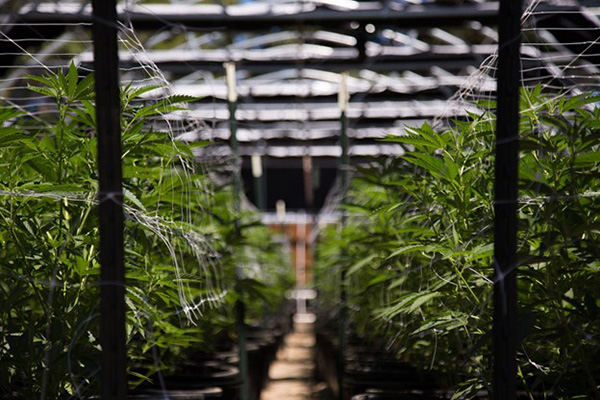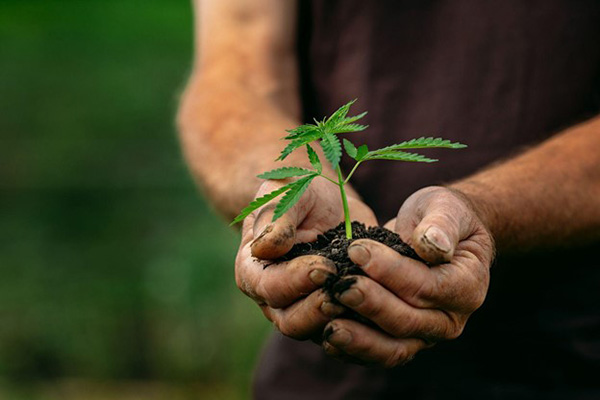From CBD to medical marijuana, the benefits of the cannabis industry are well-documented. What has fallen by the wayside is the awareness of sustainability in the cannabis industry; what is the impact on the environment of the growth and cultivation of cannabis? This is now compounded by legal cannabis and the legalization of recreational marijuana in states like California and Colorado.
Below, we explore whether or not the cannabis industry is sustainable and what roadblocks stand in the way of sustainability. We also outline cannabis and hemp environmental benefits to get the full scope of how these plants affect our planet.
Is the Cannabis Industry Sustainable?
The cannabis industry overall has the potential to be sustainable, but its current setup is anything but. Much of its sustainability issues are due to legal restrictions, but some are associated with industrial agriculture.
Currently, the industry may be seen as getting a pass from the green public, as many people look beyond some of its clear environmental impacts because of its medicinal benefits and novel recreational legalization. The environmental impact of cannabis is widespread and diverse, with effects arising from all corners of the industry, ranging from its cultivation to transportation.
What Are the Negative Environmental Impacts of Hemp?
While there are plenty of industrial hemp environmental benefits, such as creating sustainable products like hemp plastics, hemp paper, hemp fiber, hemp-based building materials, and more, the hemp and cannabis industries also have some negative environmental impacts.
Let’s review some of the negative impacts of cannabis and hemp crops.
Indoor Cannabis Facilities Are Huge Energy Draws
Hemp and marijuana cultivation is a $28 billion industry and it’s already the largest cash crop in the U.S. Sadly, 42% of the cannabis growers in the U.S. grow their plants inside massive, windowless buildings. These cannabis factories are often the size of several Walmart stores with the same energy consumption as a large data center — about 200 watts per square foot.
This makes the carbon emissions of indoor cannabis growth a whopping 16 to 100 times larger than outdoor growth.
The reason these indoor cannabis cultivation factories are such big draws on the power grid is because of the climate control they require. These factories have mechanically controlled temperature, humidity, air movement, carbon dioxide levels, and artificial lighting that remains on to match the standard daytime sunlight.
Some cannabis growers attempt to create a green image by talking up hemp environmental benefits and using renewable energy, such as installing solar panels. But installing solar panels doesn’t mean they’re actually using solar power to run their facilities. It has been speculated that one such company has a 67,000-square-foot facility with solar panels but gets less than 10% of their energy from the sun while burning natural gas to heat the building.
The big problem is that changing this may require revising government policy. First, federal law prohibits the movement of cannabis products across state lines. This means cannabis consumed in one state must also be grown and cultivated there. Not all states have the optimal growing seasons for effective outdoor cultivation and indoor growing operations often consume energy that was not produced sustainably.
Also, some states prohibit outdoor cannabis plant growth, forcing growers to build these large indoor cultivation facilities which demand heavy energy use.
Transportation Is Another Issue
Another factor impacting the sustainability of cannabis is the environmental damage caused by transporting it. Not only can it not cross state lines per federal law, but some state laws also make transportation even tougher. For example, California law requires cannabis to go through four transportation mediums on its way from the cultivation site to the consumer:
- Cannabis farmers transport their products to processors.
- Processors transport the product to distributors.
- Distributors transport to retail cannabis dispensaries.
- Customers transport the retail cannabis to their homes for consumption.
Making cannabis cultivation more sustainable would require policy changes at the state and national levels to allow more direct pathways to the end user. This would cut down on the number of touchpoints and the transportation needed to get the cannabis from the field to the consumer, reducing the air pollution and carbon footprint created.
Soil Degradation Issues
All traditional agricultural activities — cannabis cultivation included — can lead to soil degradation that threatens local ecosystems. This includes soil erosion, nutrient loss, reduced organic carbon stored within the soil, and increased acidity.
The cannabis industry can help rectify this issue by encouraging practices that make the most of hemp’s environmental benefits. Careful planning for land use and ongoing testing will ensure the soil remains healthy. The industry can also install elements of regenerative agriculture — the interconnecting of farming and ecological systems — to help ensure the soil remains viable.
Watering Practices Cause Problems
Cannabis and hemp farming requires water, of course. Most of the watering is done with supply from artificial irrigation. This can cause agricultural runoff, resulting in high concentrations of pesticides, insecticides, heavy metals, excess nutrients, and wastewater pollutants in nearby soil, watersheds, and surface water.
Indoor growing brings its own water issues. Indoor growing facilities can overtax municipal water systems by discharging excess nutrients and industrial cleaners. This also puts extra load on local wastewater systems, which can lead to more power consumption and increased greenhouse gas (GHG) emissions from power plants that burn fossil fuels.
The cannabis industry can rectify this by limiting water use to only the minimum gallons of water required for irrigation and installing an automated irrigation system with water diversions that recapture and reuse water. The latter reduces water demand and the amount of runoff, which limits its impact on water quality and public health. Whether this would occur via policy changes or self-regulation within the industry remains to be seen.
How Much Plastic Waste Does the Cannabis Industry Produce?
Another huge environmental protection issue facing the cannabis industry and hemp products is the plastic waste it produces.
There’s not only waste from cultivation practices but also consumer waste streams from single-use packaging, vape cartridges and pens, redundant packaging, and more. This combined with poor waste-management models and inefficient recycling contributes to landfills, ocean pollution, and greenhouse gas emissions.
Plastic is a big issue in the world, with 5 trillion pieces floating in our oceans. Even those that make it to landfills can take up to 1,000 years to degrade. The cannabis industry is piling onto the problem with an estimated 12.7 to 14.1 million pounds of plastic waste in just under a year in Canada, according to a [Re] Waste study.
However, this issue can be rectified by making it easier to recycle cannabis packaging and establishing common sense laws to help reduce the redundant packaging used in the cannabis industry. Much of this redundancy is for legal reasons, such as health warnings, safety, crop information, and monitoring of sales. For example, some states may require a health warning and information on the crop the product came from, leading to larger packaging to fit all this information.
Eliminating some of the wasteful packaging through policy changes or reducing waste through more efficient recycling options will go a long way in rectifying this.
Cannabis and Hemp Environmental Benefits
We covered the negative environmental impacts of cannabis and hemp, but we’d be doing a disservice if we didn’t dive deeper into the environmental benefits of hemp and cannabis. Let’s look at some of the more important benefits.
Biofuels
Among the many hemp environmental benefits is that various parts of hemp plants can create several types of fuels. The plant’s cellulose content is pre-treated and converted into sugars through a process called cellulolysis. The sugars are then fermented and distilled into ethanol, which makes up 10% of most gasoline.
There’s also hemp biodiesel that’s extracted from the hemp seed for use in diesel engines. This fuel can work in any diesel engine and is biodegradable, safe to store and transport, and has a much higher flashpoint than standard diesel fuel.
Carbon Sequestration
Like many other plants that go through photosynthesis, cannabis and industrial hemp sequester carbon from the atmosphere. This can help lower the amount of greenhouse gases in the atmosphere and help combat climate change.
Will cannabis alone reverse years of excessive emissions? No, but it can play a role in a grander scheme to lower the carbon in the atmosphere while providing numerous other environmental benefits.
Soil Cleansing
Industrial agriculture is known for using pesticides, herbicides, fertilizers, rodenticides, and other harmful chemicals, which get into the soil and make it unsafe for future growth. Other industries also pollute the soils with heavy metals and other chemicals. Cannabis and hemp environmental benefits include proven effectiveness at absorbing these contaminants from the soil through a process called phytoremediation.
In Europe, cannabis is commonly used this way. In Italy, it’s a common practice for farmers to use cannabis to help combat soil contamination. Plus, researchers in Germany discovered hemp extracted lead, cadmium, and nickel from a sewage-contaminated area of land.
Reduced Deforestation
Industrial hemp can be turned into hemp paper, giving us an alternative to cutting down trees and creating devastating deforestation. Plus, hemp matures in roughly four months, significantly faster than trees. This quicker maturation allows one acre of hemp to produce as much paper as 4 to 10 acres of trees over a 20-year period.
Hemp paper is also durable enough to be recycled more than twice as many times as paper made from tree pulp. It can be recycled up to eight times, while tree pulp paper can only be recycled three times. With more production per acre and more than double the recyclability, hemp paper can go a long way in freeing us from tree-pulp-based paper.
Sustainable Textiles
Cannabis plants can also be turned into one of the strongest organic fabrics in the world — three times stronger than cotton. This fabric is 100% biodegradable, and one major hemp environmental benefit is that it requires a third of the water cotton needs to grow. On top of that, it nets 220% more fiber than cotton.
Cannabis Can Be Sustainable With Some Tweaks
While there are cannabis and hemp environmental benefits, the industry as a whole has sustainability issues. These range from energy-hungry indoor growth to excessive plastic waste to wasteful transportation and packaging laws. Fortunately, these issues can easily be fixed through tweaks to federal and state laws, relaxing some of the controls in the cannabis industry.
While you may not be able to change the laws to help improve the sustainability of the cannabis industry, you can do your part in offsetting some of the cannabis industry’s environmental issues through carbon removal. By purchasing carbon offset credits from Terrapass, you can offset the carbon associated with the growth and cultivation of any cannabis or hemp products you consume.
Brought to you by terrapass.com
Featured image:
- Coinsmart. Europe’s Best Bitcoin and Crypto Exchange.Click Here
- Platoblockchain. Web3 Metaverse Intelligence. Knowledge Amplified. Access Here.
- Source: https://terrapass.com/blog/sustainability-in-cannabis-industry







